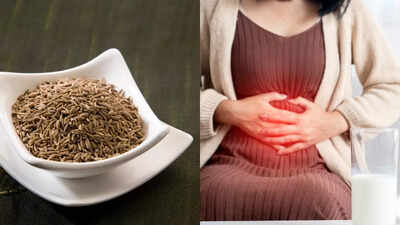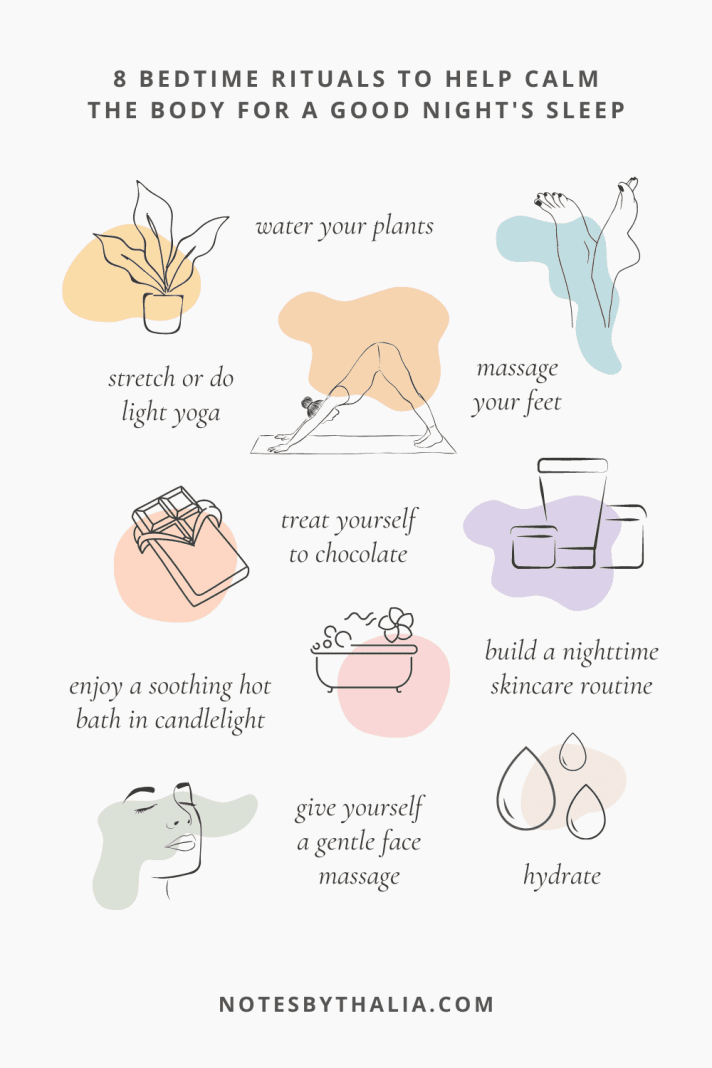The Unseen Battle: Decoding the Three Main Headaches and Their Triggers
From the dull throb that whispers of a stressful day to the searing, incapacitating agony that demands surrender, headaches are a universal human experience. Yet, beneath this common lament lies a complex symphony of neurological pathways, physiological responses, and deeply personal triggers. To dismiss a headache as mere pain is to overlook the intricate narratives woven into each unique presentation. This article embarks on a journey to decode the three main types of headaches – Tension-Type, Migraine, and Cluster – peeling back the layers of their pathology, understanding their distinct voices, and illuminating the triggers that often orchestrate their unwelcome arrival. For the knowledgeable mind, this exploration aims to transform a generalized understanding of head pain into a nuanced appreciation of its diverse and often debilitating manifestations.
The Common Chorus: Tension-Type Headache (TTH)
Imagine a tightening band around the head, a persistent pressure that feels like a vice slowly clenching, or a dull, aching sensation that permeates the scalp. This is the hallmark of the Tension-Type Headache (TTH), the most prevalent form of headache, affecting a staggering percentage of the global population at some point in their lives. Often dismissed as "just a headache," TTH, particularly in its chronic form, can significantly diminish quality of life, acting as a constant, low-level antagonist in the background of daily existence.
Defining the Ache:
TTH is characterized by mild to moderate pain that is typically bilateral (affecting both sides of the head), non-pulsating, and not aggravated by routine physical activity. Unlike migraine, it generally lacks associated symptoms such as nausea, vomiting, or photophobia (sensitivity to light) and phonophobia (sensitivity to sound) in their severe forms. However, one or the other might be present in mild degrees. It’s often described as a pressure, tightness, or aching sensation. The duration can vary widely, from 30 minutes to several days, and its frequency categorizes it into infrequent episodic (less than one day per month), frequent episodic (1-14 days per month), or chronic (15 or more days per month for at least three months).
Pathophysiology – More Than Just Muscle:
For decades, TTH was primarily attributed to sustained contraction of pericranial muscles – those surrounding the skull, such as the temporalis, masseter, and neck muscles. While muscular tension undoubtedly plays a role, especially in episodic TTH, modern neuroscience reveals a more intricate picture, particularly in chronic TTH. The prevailing hypothesis points to a combination of peripheral and central sensitization.
Peripheral sensitization involves increased excitability of nociceptors (pain receptors) in the pericranial myofascial tissues. Sustained muscle contraction, ischemia, and the release of inflammatory mediators (like prostaglandins, bradykinin, and substance P) can sensitize these receptors, making them more responsive to stimuli. This explains the tenderness often felt in the scalp, neck, and shoulders during a TTH episode.
However, the transition from episodic to chronic TTH is believed to involve central sensitization. This is a phenomenon where neurons in the central nervous system (CNS), particularly in the brainstem and spinal cord, become hyperexcitable. Repeated or prolonged nociceptive input from peripheral tissues can lead to plastic changes in these central pain pathways. This means that stimuli that were once non-painful can now elicit pain (allodynia), and painful stimuli are perceived as much more intense (hyperalgesia). Descending pain modulatory systems, which normally inhibit pain signals, may also become dysfunctional in chronic TTH sufferers, further exacerbating the pain experience. Neurotransmitters like serotonin, norepinephrine, and endocannabinoids, which play roles in pain modulation, are also implicated in the complex neurobiology of TTH.
The Trigger Tapestry:
The triggers for TTH are as varied as the stresses of modern life, reflecting the intimate connection between mind and body.
- Stress (Emotional and Physical): This is by far the most common trigger. Psychological stress, anxiety, and depression can lead to sustained muscle tension, particularly in the neck, shoulders, and jaw, which in turn can initiate or perpetuate TTH. Physical stress, such as prolonged awkward postures (e.g., hunching over a computer, holding a phone between ear and shoulder), can also contribute significantly.
- Lack of Sleep/Fatigue: Insufficient or poor-quality sleep disrupts the body’s natural restorative processes and can lower the pain threshold, making one more susceptible to TTH.
- Dehydration: Even mild dehydration can contribute to headaches, as brain tissue can slightly shrink, pulling away from the skull, and affecting blood flow.
- Skipped Meals/Hunger: Fluctuations in blood sugar levels, particularly hypoglycemia, can trigger headaches.
- Eye Strain: Prolonged focus on screens, reading in poor light, or uncorrected vision problems can lead to muscle tension around the eyes and forehead.
- Caffeine Withdrawal: For regular caffeine consumers, missing a usual dose can lead to withdrawal symptoms, including headaches, due to vasodilation of cerebral blood vessels.
- Jaw Clenching/Bruxism: Unconscious clenching or grinding of teeth, especially during sleep, puts significant strain on the temporomandibular joint (TMJ) and surrounding muscles, radiating pain to the temples and head.
- Certain Odors: While more commonly associated with migraine, strong perfumes or chemical smells can sometimes trigger TTH in sensitive individuals.
Management & Mitigation:
Acute treatment often involves over-the-counter analgesics like NSAIDs (ibuprofen, naproxen) or acetaminophen. For chronic TTH, a multifaceted approach is essential, including stress management techniques (mindfulness, meditation, biofeedback), physical therapy to address posture and muscle imbalances, acupuncture, and sometimes preventive medications like tricyclic antidepressants (e.g., amitriptyline) in low doses, which help modulate pain pathways. Understanding and avoiding personal triggers is a cornerstone of effective management.
The Tempest Within: Migraine
Far more than a severe headache, migraine is a complex neurological disorder that orchestrates a multi-act drama of sensory hypersensitivity, debilitating pain, and systemic dysfunction. Affecting approximately 1 in 7 people globally, it ranks among the leading causes of disability worldwide, often striking individuals in their most productive years. To understand migraine is to peer into a neurological tempest, where genetic predisposition meets environmental cues to unleash an unparalleled assault on the senses.
Beyond a Headache:
A migraine attack typically unfolds in distinct phases, though not every individual experiences all of them:
- Prodrome (Pre-headache): Occurring hours or even days before the pain, symptoms can include mood changes (irritability or euphoria), food cravings, neck stiffness, frequent yawning, increased urination, or difficulty concentrating.
- Aura (For about 25-30% of sufferers): This is a transient neurological symptom that precedes or sometimes accompanies the headache phase. Most commonly visual (scintillating scotomas, zigzag lines, flashing lights, blind spots), it can also be sensory (numbness, tingling), motor (weakness), or speech-related (aphasia). Auras typically develop gradually over 5-20 minutes and last less than 60 minutes.
- Headache Phase: The defining characteristic is moderate to severe, unilateral (one-sided, though it can shift or become bilateral), throbbing or pulsating pain. It is often aggravated by physical activity and accompanied by nausea, vomiting, photophobia, and phonophobia. This phase can last from 4 to 72 hours.
- Postdrome (Post-headache): Often called the "migraine hangover," symptoms can include fatigue, difficulty concentrating, neck stiffness, mood changes, and a dull head pain that can persist for up to 24-48 hours.
The Neurological Ballet:
The pathophysiology of migraine is incredibly complex, involving a cascade of neurological events, neurotransmitter imbalances, and neurovascular changes. It’s no longer considered a purely vascular phenomenon (vasoconstriction followed by vasodilation) but rather a primary brain disorder with secondary vascular consequences.
- Cortical Spreading Depression (CSD): This is considered the underlying mechanism for migraine aura and is thought to initiate the migraine attack itself. CSD is a wave of neuronal and glial depolarization that slowly spreads across the cerebral cortex, followed by a period of sustained inhibition. This depolarization releases a host of neurochemicals, including potassium, glutamate, and nitric oxide, and triggers local inflammatory responses.
- Trigeminal Pathway Activation: The trigeminal nerve, the largest cranial nerve, plays a central role in transmitting pain signals from the head and face. CSD is believed to activate the trigeminal system, particularly the trigeminal ganglion and its connections to the brainstem. This activation leads to the release of neuropeptides from trigeminal nerve endings, notably Calcitonin Gene-Related Peptide (CGRP) and Substance P.
- CGRP and Neuroinflammation: CGRP is a potent vasodilator and a key player in migraine pain. Released from trigeminal afferents, it promotes vasodilation of meningeal blood vessels and contributes to neurogenic inflammation in the dura mater (the tough outer membrane covering the brain). This inflammation, along with sensitization of peripheral and central trigeminal neurons, leads to the throbbing pain and hypersensitivity characteristic of migraine.
- Serotonin (5-HT): Serotonin has long been implicated in migraine, with fluctuations in its levels thought to contribute to attack initiation. Many migraine medications (triptans) target serotonin receptors.
- Brain Regions: Key brain areas involved include the hypothalamus (implicated in prodromal symptoms and circadian rhythm), the brainstem (especially the periaqueductal gray and locus coeruleus, involved in pain modulation), and the thalamus (a major sensory relay station).
- Genetic Predisposition: Migraine has a strong genetic component, with specific genes influencing ion channels, neurotransmitter receptors, and pathways involved in brain excitability.
Aura’s Enigma:
The migraine aura, a transient neurological event, is most commonly visual. Scintillating scotomas (shimmering, shimmering blind spots or zigzag lines) are classic, but it can manifest as partial vision loss, tunnel vision, or distorted perceptions. Sensory auras involve tingling or numbness that spreads across a limb or one side of the face. Less commonly, motor weakness (hemiplegic migraine) or speech difficulties (dysphasic migraine) can occur. The slow progression of aura symptoms (typically 5-20 minutes) helps differentiate it from a stroke or TIA, which usually have sudden onset.
The Trigger Labyrinth:
Migraine triggers are highly individual, often numerous, and can interact in complex ways. What triggers an attack in one person may have no effect on another, and sometimes it’s a combination of factors that crosses a personal threshold.
- Hormonal Fluctuations: This is a major trigger for many women. Estrogen withdrawal during menstruation (menstrual migraine), ovulation, pregnancy, or around menopause can trigger attacks. Oral contraceptives can sometimes worsen or improve migraines.
- Stress (and the "Let-down Effect"): While stress can trigger TTH, for migraineurs, it’s often the release of stress (the "let-down effect" on weekends or after a major project) that precipitates an attack.
- Sleep Disturbances: Both too much and too little sleep can be problematic. Irregular sleep schedules, insomnia, or even oversleeping on weekends can act as triggers.
- Dietary Factors:
- Alcohol: Especially red wine and dark liquors, due to histamines and other compounds.
- Caffeine: Both excessive intake and withdrawal can trigger migraines.
- Aged Cheeses: Contain tyramine.
- Processed Meats: Contain nitrates/nitrites.
- MSG (Monosodium Glutamate): Found in many processed foods and Asian cuisine.
- Artificial Sweeteners (Aspartame):
- Chocolate: Though some studies suggest chocolate cravings might be a prodromal symptom rather than a trigger.
- Skipped Meals: Leads to blood sugar fluctuations.
- Sensory Overload:
- Bright or Flickering Lights: Especially fluorescent lights, computer screens, or sunlight.
- Loud Noises: Concerts, traffic, noisy environments.
- Strong Odors: Perfumes, chemicals, smoke, certain foods.
- Weather Changes: Barometric pressure changes, extreme heat or cold, humidity, and even strong winds can be significant triggers for some.
- Physical Exertion: Intense exercise, straining, or even sexual activity can sometimes trigger an attack.
- Medication Overuse: Paradoxically, frequent use of acute migraine medications can lead to medication overuse headache (MOH), transforming episodic migraine into a chronic daily problem.
Therapeutic Horizons:
Migraine treatment has seen revolutionary advancements. Acute treatments aim to stop an attack once it starts:
- Triptans: (e.g., sumatriptan, zolmitriptan) are serotonin receptor agonists that constrict dilated blood vessels and inhibit neuropeptide release.
- CGRP Receptor Antagonists (gepants): (e.g., rimegepant, ubrogepant) block the action of CGRP, offering a new acute treatment option.
- Ditans: (e.g., lasmiditan) selectively target 5-HT1F receptors without causing vasoconstriction, making them suitable for patients with cardiovascular risk factors.
- NSAIDs and Acetaminophen: For mild to moderate attacks.
- Antiemetics: For nausea and vomiting.
Preventative treatments are taken regularly to reduce the frequency and severity of attacks:
- Beta-blockers: (e.g., propranolol)
- Anticonvulsants: (e.g., topiramate, valproate)
- Antidepressants: (e.g., amitriptyline, venlafaxine)
- Botox injections: For chronic migraine.
- CGRP Monoclonal Antibodies: (e.g., erenumab, fremanezumab, galcanezumab, eptinezumab) are disease-specific preventative treatments that target CGRP or its receptor, representing a paradigm shift in migraine management.
- Neuromodulation Devices: Non-invasive devices (e.g., Cefaly, gammaCore, Nerivio) that stimulate specific nerves or brain regions.
The Unrelenting Fury: Cluster Headache (CH)
If migraine is a tempest, then Cluster Headache (CH) is a brutal, punctual assailant. Often dubbed the "suicide headache" due to its excruciating intensity and the profound despair it can induce, CH is thankfully rare but arguably the most severe primary headache disorder. It affects approximately 0.1% of the population, predominantly men, and typically begins in their 20s-40s. Its characteristic periodicity, intense pain, and associated autonomic symptoms paint a distinct and terrifying clinical picture.
The "Suicide Headache":
CH is characterized by severe to very severe unilateral orbital, supraorbital, and/or temporal pain that reaches maximum intensity within minutes. The pain is typically described as boring, burning, stabbing, or piercing. Unlike migraineurs who seek quiet and darkness, CH sufferers are often restless and agitated, pacing or rocking during an attack.
The hallmark of CH is its clustering pattern: attacks occur in "clusters" lasting weeks to months, followed by remission periods that can last months to years. Within a cluster period, attacks can occur multiple times a day (1-8 times), often at the same time each day, sometimes waking the individual from sleep. Each attack lasts from 15 to 180 minutes.
Crucially, CH is accompanied by prominent ipsilateral (same side as the pain) cranial autonomic symptoms:
- Lacrimation: Tearing of the eye.
- Rhinorrhea/Nasal Congestion: Runny or blocked nose.
- Ptosis: Drooping eyelid.
- Miosis: Constriction of the pupil.
- Facial Sweating/Flushing:
- Conjunctival Injection: Redness of the eye.
- Eyelid Edema: Swelling of the eyelid.
These symptoms reflect the involvement of the autonomic nervous system.
The Hypothalamic Conductor:
The pathophysiology of CH is distinct from TTH and migraine, centering largely on the hypothalamus, a vital brain region involved in regulating circadian rhythms, sleep-wake cycles, and hormonal balance. Functional imaging studies have consistently shown activation of the posterior inferior hypothalamus during CH attacks, suggesting it acts as a "pacemaker" or "conductor" for the attacks’ characteristic periodicity.
The activation of the hypothalamus is thought to trigger the trigeminal autonomic reflex. This reflex involves connections between the trigeminal nerve (carrying pain signals) and the superior salivatory nucleus in the brainstem, which controls parasympathetic outflow to the lacrimal gland (tearing) and nasal mucosa (congestion/rhinorrhea). Sympathetic dysfunction (leading to ptosis and miosis) is also involved, further highlighting the widespread autonomic dysregulation.
Neurotransmitters and neuropeptides implicated include CGRP, nitric oxide, histamine, and orexin (hypocretin), all of which have connections to hypothalamic function and pain pathways. There’s also evidence of a genetic predisposition, with certain gene variants increasing susceptibility.
Triggers & Provocateurs:
Unlike migraine, CH triggers are often less about subtle environmental cues and more about potent vasodilators or specific substances that can provoke an attack during a cluster period. Outside a cluster, these same substances might have no effect.
- Alcohol: Particularly during a cluster period, even a small amount of alcohol can reliably trigger an attack within minutes.
- Nicotine: Smoking is a common habit among CH sufferers, and nicotine can act as a potent trigger.
- Histamine: Substances that release histamine or are high in histamine can be provocateurs.
- Nitroglycerin: This potent vasodilator, used to treat angina, is a well-known trigger for CH.
- Strong Odors: Similar to migraine, some individuals report strong odors as triggers, especially during a cluster.
- Sleep Disturbances: Irregular sleep patterns or napping during a cluster period can sometimes precipitate attacks.
It’s crucial to distinguish between factors that trigger an attack during a cluster and factors that cause CH. The underlying cause is neurological, likely rooted in hypothalamic dysfunction.
Emergency & Expertise:
Due to the severity and rapid onset of CH, acute treatment must be swift and effective.
- High-Flow Oxygen: Inhaling 100% oxygen through a non-rebreather mask for 15-20 minutes is often remarkably effective and is a first-line acute treatment.
- Subcutaneous Triptans: Injectable sumatriptan is highly effective due to its rapid absorption, providing relief within minutes. Nasal spray triptans are also used. Oral triptans are too slow to be effective for CH.
Preventative treatment aims to shorten cluster periods or prevent them altogether:
- Verapamil: A calcium channel blocker, is a cornerstone of CH prevention.
- Corticosteroids: (e.g., prednisone) can be used for short-term "bridge" therapy to break a cluster, but long-term use is limited by side effects.
- Lithium: For some chronic CH patients.
- Topiramate: An anticonvulsant.
- CGRP Monoclonal Antibodies: Certain anti-CGRP mAbs (e.g., galcanezumab) have shown efficacy in treating episodic cluster headache.
- Neuromodulation: Non-invasive vagus nerve stimulation (nVNS) and sphenopalatine ganglion (SPG) stimulation devices are approved for CH. For refractory chronic CH, deep brain stimulation (DBS) of the posterior inferior hypothalamus has shown promising results, albeit as a last resort.
Interconnections, Overlaps, and the Human Dimension
While these three headache types possess distinct identities, the world of head pain is not always neatly compartmentalized. There are overlaps, transformations, and comorbidities that complicate diagnosis and management.
- Chronic Daily Headache: A broad term encompassing headaches occurring 15 or more days per month. It can arise from transformed migraine, chronic TTH, or medication overuse headache.
- Medication Overuse Headache (MOH): A critical consideration, particularly for TTH and migraine sufferers who rely too heavily on acute medications. The brain becomes sensitized, leading to a vicious cycle where medication withdrawal triggers more pain, prompting more medication use.
- Comorbidity: Headaches, particularly migraine and chronic TTH, frequently co-occur with psychiatric conditions such as depression, anxiety disorders, and panic attacks. This complex interplay necessitates a holistic treatment approach addressing both the pain and mental health.
The story of headaches is ultimately a human one, etched in the daily struggles of millions. It’s a narrative of resilience in the face of excruciating pain, of searching for understanding, and of the profound impact these conditions have on work, relationships, and overall well-being.
The Path Forward: Understanding as Empowerment
Decoding the three main types of headaches – Tension-Type, Migraine, and Cluster – reveals a landscape far more intricate than simple head pain. Each possesses a unique neurobiological signature, a distinct clinical voice, and a specific set of triggers that can initiate its reign of discomfort. For the knowledgeable individual, this deeper understanding is not merely academic; it is a powerful tool.
Accurate diagnosis is the first and most crucial step, enabling targeted treatments that move beyond generalized pain relief to address the underlying mechanisms. Identifying and managing personal triggers, though often challenging, empowers individuals to take a proactive role in their own care, potentially reducing the frequency and severity of attacks.
As neuroscience continues to unravel the mysteries of the brain, new therapeutic avenues emerge, offering hope for more effective and personalized treatments. From advanced pharmacotherapies targeting specific pain pathways to sophisticated neuromodulation techniques, the future holds promise for those living with the unseen battles waged within their heads. By continuing to learn, to empathize, and to advocate for those affected, we can collectively strive to transform the narrative of head pain from one of silent suffering to one of informed management and renewed hope.






